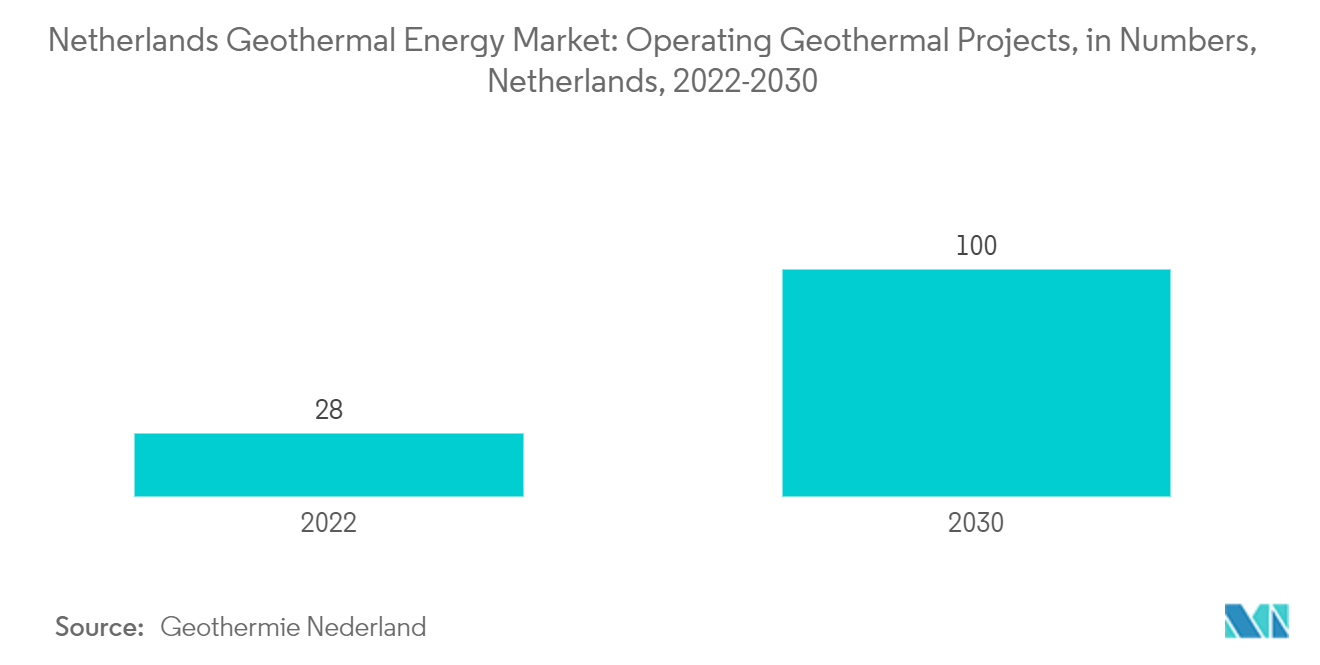Market Trends of Netherlands Geothermal Energy Industry
Ultra-deep Geothermal Energy to Dominate the Market
- Ultra-Deep geothermal energy is the natural heat found beneath the earth's surface. It comes from the red-hot core of our planet, the friction between rocks, and the decay of radioactive elements on the earth's crust.
- Using geothermal energy instead of gas as a heat source significantly reduces CO2 emissions. For an average project, the CO2 reduction is 88% compared to natural gas. Ultra-deep Geothermal energy is a method for producing heat with temperatures above 130 °C. The heat can be used to produce electricity or for industrial processes.
- The prevalent underground thermal energy storage systems are open systems that use groundwater wells to store heat and cold. This technology is called Aquifer Thermal Energy Storage (ATES).
- In March 2023, VB Geo Projects (VB) has been commissioned by Aardwarmte Vogelaer for the design and execution of the surface facilities and underground transport pipelines for Vogalaer 2, the second geothermal heat project of Aardwarmte Vogelaer.
- The Government of the Netherlands has an ambitious target for geothermal energy to meet 5% of the total energy demand for heat in 2030 and 23% in 2050. The ambitions are set at 50 petajoule (PJ) in 2030 and 200 PJ in 2050.
- Owing to the above points, Ultra-deep geothermal Energy is anticipated to dominate the Market.
Supportive Government Policies to Drive the Market
- Geothermie Nederland urges consideration of the updated Mining Act modifications to ensure they meet the geothermal industry's requirements. The frameworks for designating the area for heat sales, the regulation of competing industries, and the standards for issuing follow-up licenses in comparison to initial permits are some of the areas of the law that require improvement.
- The Ministry of Economic Affairs and Climate has received an action plan from the Dutch geothermal business through Geothermie Nederland that aims to hasten the development of the geothermal sector in the country. Moreover, The action plan establishes lofty goals, such as geothermal energy production of 40 to 50 PJs by 2030, effectively quadrupling the total amount of geothermal energy.
- Renewable energy contributed 14.4% to primary energy consumption in 2022 (0.54 Exajoules of primary emergy consumption was from Renewables).
- Also, as a part of the country’s sustainable energy transition subsidy scheme (SDE++) round of 2023, The Directorate General for Climate and Energy of the Netherlands announced that a grant of EUR 2 billion will be made available for at least 18 new geothermal projects in the coming years.
- Furthermore, there are currently 22 geothermal projects under management or have SDE++ decisions that have not yet been realized. With the new announcement, the total number of geothermal projects in the Netherlands can reach more than 50. According to Geothermie Nederland, these projects will be able to provide sustainable heat production of 7% of the homes in the country, or up to 25% of the total Dutch heat demand in the future.
- Owing to the above points, supportive government policies are expected to dominate the Netherlands geothermal energy market during the forecast period.




